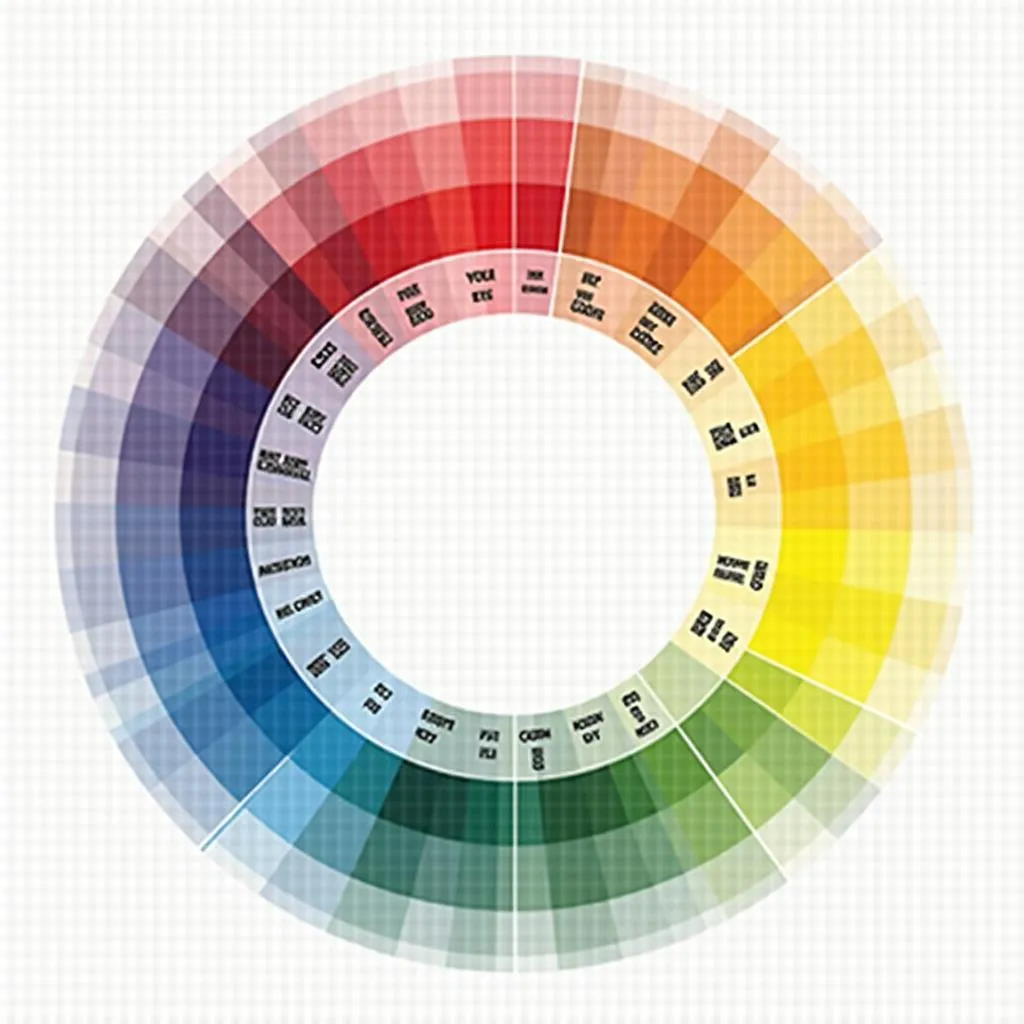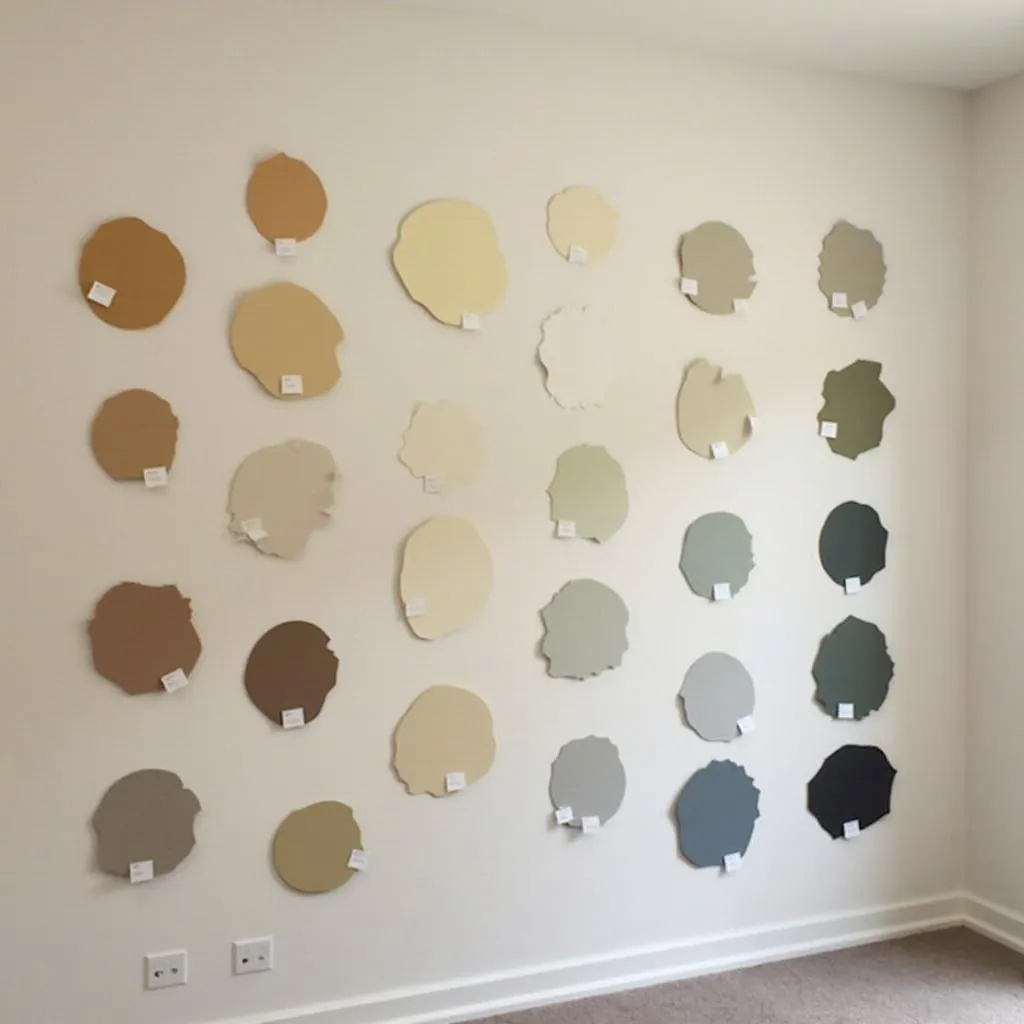Choosing the right paint colors for your home can feel overwhelming. With countless shades and combinations, it’s easy to get lost in a sea of swatches. Fear not, color enthusiasts! This comprehensive guide will equip you with the knowledge and confidence to create a harmonious and visually appealing color palette that flows seamlessly from room to room.
Understanding the Basics of Color Coordination
Before diving into specific techniques, let’s establish a foundation in color theory. The color wheel is our trusty sidekick in this endeavor.
- Complementary Colors: These colors sit opposite each other on the color wheel, like blue and orange or red and green. When used together, they create a vibrant and energetic contrast.
- Analogous Colors: Located next to each other on the color wheel, such as blue, blue-green, and green, analogous colors offer a sense of harmony and tranquility.
- Triadic Colors: Forming an equilateral triangle on the color wheel, triadic colors (e.g., red, blue, yellow) offer a balanced and visually stimulating combination.
 Color Wheel Combinations
Color Wheel Combinations
Creating a Cohesive Color Story
Think of your home’s color palette as a narrative. Each room should contribute to the overall story while maintaining its distinct personality.
- Choose a Dominant Color: Select one hue to serve as the foundation for your palette. This color will likely be most prominent in shared spaces like living rooms and hallways.
- Select Supporting Colors: Introduce two to three supporting colors that complement the dominant hue. These can be used in bedrooms, bathrooms, and accent walls.
- Consider the Mood: Warm colors like reds, oranges, and yellows evoke energy and excitement, while cool colors like blues, greens, and purples promote calmness and relaxation.
Flow and Transition: Connecting Spaces
Seamless transitions between rooms are crucial for a harmonious feel.
- Paint Trim a Unifying Color: Using the same trim color throughout your house creates a sense of continuity, even if the wall colors vary.
- Repeat Accent Colors: Incorporate pops of your supporting colors in each room through accessories, textiles, and artwork.
- Consider Architectural Features: Use paint to highlight interesting architectural details like moldings, fireplaces, and built-in shelves.
 Living Room with Accent Wall
Living Room with Accent Wall
Factors to Consider for Each Room
- Natural Light: Rooms flooded with natural light can handle bolder colors, while darker spaces benefit from lighter, brighter hues.
- Room Function: Consider the purpose of each space. For instance, bedrooms are often sanctuaries for relaxation, while kitchens might benefit from energizing hues.
- Personal Style: Ultimately, your home’s color palette should reflect your unique taste and personality.
Expert Insights
“When coordinating paint colors, don’t be afraid to experiment! Order paint samples and test them on your walls in different lighting conditions to see how they truly look,” advises renowned color consultant, Emily Carter. “Remember, paint can always be changed, so have fun with it!”
 Paint Samples on Wall
Paint Samples on Wall
Conclusion
Coordinating paint colors throughout your house is an art that requires a thoughtful approach and attention to detail. By understanding the basics of color theory, establishing a cohesive color story, ensuring smooth transitions, and considering room-specific factors, you can transform your house into a visually stunning and harmonious haven.
FAQs
Q: Can I use different shades of the same color throughout my house?
A: Absolutely! Using varying shades of the same color can create a sense of depth and dimension while maintaining a cohesive look.
Q: How do I choose the right white paint color?
A: White paint comes in countless undertones. Consider the other colors in your palette and opt for a white that complements them.
Q: Can I mix warm and cool colors?
A: While it’s generally recommended to stick with one color temperature, mixing warm and cool tones can create a balanced and inviting atmosphere.
Q: What if I’m still struggling to choose paint colors?
A: Don’t hesitate to seek professional help from a color consultant or interior designer. They can provide expert guidance tailored to your specific needs and preferences.
Need help finding the perfect color palette for your home? Contact us at 0373298888, email us at [email protected], or visit our showroom at 86 Cầu Giấy, Hà Nội. Our team of color experts is available 24/7 to answer your questions and guide you every step of the way.

